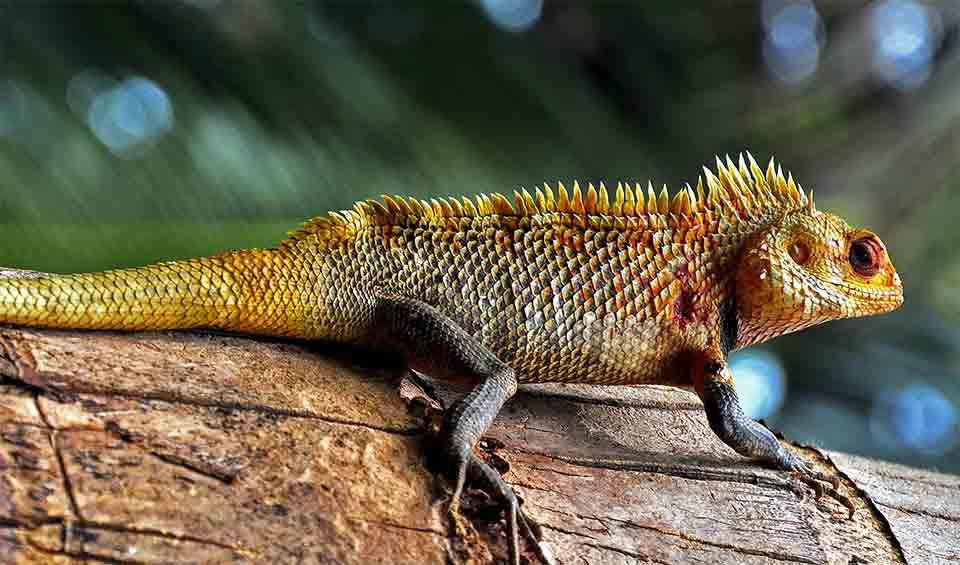A widespread reptilian species with a striking presence in gardens, agricultural fields, and urban landscapes throughout Southeast Asia and parts of South Asia. Its distribution extends through various countries, including India, Sri Lanka, Thailand, Vietnam, Malaysia, and the Philippines, making it one of these regions’ most commonly encountered lizards.
These lizards are known for their agility and the males’ bright breeding colors. They possess a distinct crest of spines running down their back, which is more pronounced in males and adds to their impressive appearance during the breeding season. The male Oriental garden lizards are also distinguished by their bright throat colors, ranging from red to deep orange, used to attract females or intimidate rivals.
The Oriental garden lizard is a diurnal creature, most active during the day when it basks in the sun to regulate its body temperature. Its diet is primarily insectivorous, preying on various insects and small invertebrates. However, it is known to exhibit opportunistic feeding behavior and can occasionally consume plant matter, making it an omnivore.
One of the most remarkable features of the Oriental garden lizard is its ability to change skin color. This change is not as dramatic as that of a chameleon. Still, it is significant enough to aid in camouflage or reflect the lizard’s physiological condition, such as stress or territorial display.
Breeding season brings about another interesting behavior in these lizards. Males perform a series of head-bobs and push-ups to attract females and to establish dominance over a territory. During this time, their colors become more vivid and their interactions more conspicuous.
The adaptability of the Oriental garden lizard is noteworthy. It thrives not only in forests and grasslands but also in human-modified environments. This adaptability and their role in controlling insect populations benefit their ecosystems and nearby humans.
Distribution
 Afghanistan
Afghanistan Bangladesh
Bangladesh Bhutan
Bhutan Brunei
Brunei Cambodia
Cambodia China
China Hong Kong
Hong Kong India
India Indonesia
Indonesia Iran
Iran Kenya
Kenya Laos
Laos Macao
Macao Malaysia
Malaysia Maldives
Maldives Mauritius
Mauritius Myanmar
Myanmar Nepal
Nepal Oman
Oman Pakistan
Pakistan Réunion
Réunion Seychelles
Seychelles Singapore
Singapore Sri Lanka
Sri Lanka Thailand
Thailand United States
United States Vietnam
VietnamAnything we've missed?
Help us improve this page by suggesting edits. Glory never dies!
Suggest an editGet to know me
Terrestrial / Aquatic
Altricial / Precocial
Polygamous / Monogamous
Dimorphic (size) / Monomorphic
Active: Diurnal / Nocturnal
Social behavior: Solitary / Pack / Herd
Diet: Carnivore / Herbivore / Omnivore / Piscivorous / Insectivore
Migratory: Yes / No
Domesticated: Yes / No
Dangerous: Yes / No





